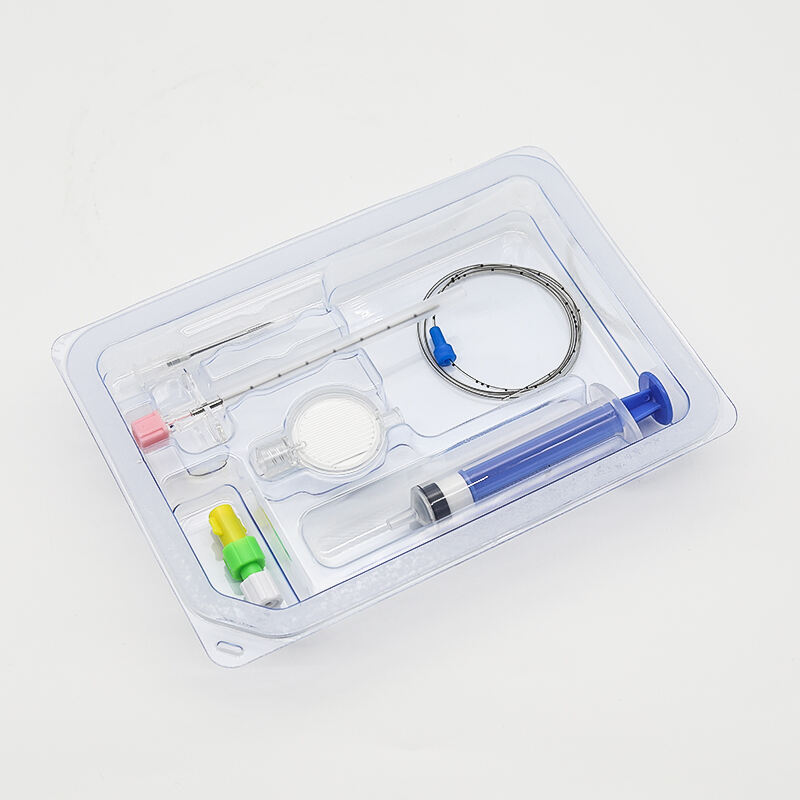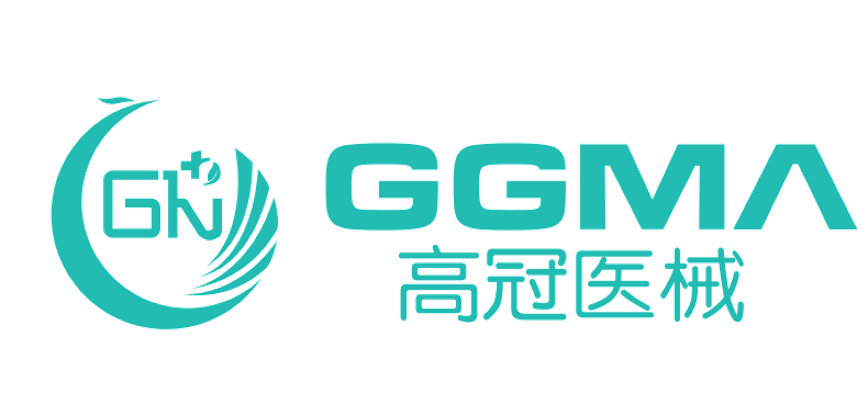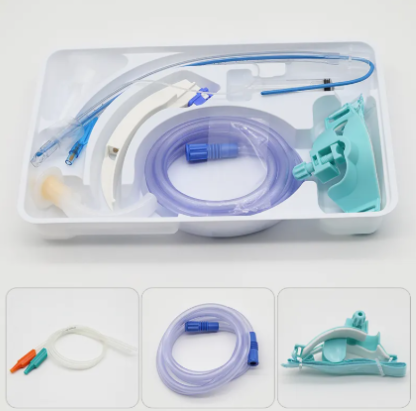Viktige komponenter i et anestesisett
Verktøy for luftveisstyring til sikker ventilasjon
Riktig håndtering av luftveier er helt avgjørende for å sikre at pasienter puster sikkert under bedøvelse. Det finnes flere forskjellige verktøy, fra endotrakeale rør til larynxmasker og orofaryngeale luftveier, hver designet for spesifikke situasjoner. Endotrakeale rør settes rett gjennom stemmene, noe som hjelper med å forhindre tilstoppinger under kirurgi. Mange klinikere foretrekker larynxmasker fordi de kan settes inn raskt over stemmeboksen. Orofaryngeale luftveier holder også luftveiene åpne, hovedsakelig ved å hindre tungeten i å blokkere luftstrømmen. Å velge riktig størrelse og type er svært viktig, spesielt siden barn trenger helt annet utstyr enn voksne. Å gjøre gode valg her handler ikke bare om å følge protokoller – det bestemmer bokstavelig talt om en person får nok oksygen under en operasjon. De fleste erfarne anestesileger vil fortelle at dette valget kan gjøre hele forskjellen mellom en problemfri prosedyre og potensielle komplikasjoner senere.
Legemiddelsystemer og medikamentkompatibilitet
Anestesipakker er utstyrt med ulike metoder for legemiddelgiving, inkludert sprøyter, infusjonsponper og nebulizatorer som hjelper til med å få medisiner dit de skal. Sprøyter gjør at leger kan måle nøyaktige doser, noe som er ganske viktig når det gjelder kraftige legemidler. Pumper sørger for jevn tilførsel under lange operasjoner og bidrar til å opprettholde riktig konsentrasjon av legemidler over tid. Deretter har vi nebulizer for gassanestetika, som lar pasienter puste dem inn raskt. Men det handler ikke bare om å få riktige verktøy inn i settet. Kompatibilitet mellom medisiner betyr mye også. Å blande visse legemidler kan føre til problemer, og vi har sett mange tilfeller der inkompatible kombinasjoner førte til alvorlige problemer under operasjoner. Derfor bruker sykehus mye tid på å sjekke hva som passer godt sammen før noe settes inn i disse settene.
Overvåkingsenheter for real-tidspasientvurdering
Anestesikittene ville ikke være komplette uten overvåkningsutstyr som samler inn data på pasientene mens de er under. Ting som pulsoksimetre, de små apparatene som festes på fingrene, kapnografimaskiner som måler CO2-nivåer, og EKG-monitorer som sjekker hjertevirksomheten, spiller alle sin rolle. Pulsoksimetret forteller oss hvor mye oksygen som kommer fram til vevet, kapnografien viser hva som skjer med karbondioksyden i utpusten, og EKG gir et bilde av hjrterytmen slik at vi kan følge med under hele prosedyren. Denne kontinuerlige strømmen av informasjon betyr mye når man må ta hurtige beslutninger under en operasjon. Pasientsikkerheten avhenger virkelig av dette, ikke bare under selve prosedyren, men også under oppsvinget etterpå. De mest erfarne anestesileger vil fortelle at nøyaktige målinger fra disse instrumentene ofte betyr forskjellen på å oppdage problemer tidlig eller å overse dem fullstendig når forholdene endrer seg plutselig.
Sikkerhetsfunksjoner i Moderne Narkosesett
Feilsikringsmekanismer for å Forhindre Overdosering
Anestesikittene i dag er utstyrt med flere sikkerhetsfunksjoner som er designet for å forhindre overdoser før de skjer. En viktig del av dette er den automatiserte medikamentkalkulatoren som er innebygd i mange moderne systemer. Disse nyttige verktøyene regner ut nøyaktig hvor mye bedøvelse som skal gis til hver pasient basert på faktorer som kroppsvekt og alder. Å se på tall fra sykehusjournaler fra de siste årene viser noe interessant – disse kalkulatorene reduserer faktisk antall utilsiktede overdoser betraktelig. Det gjør en virkelig forskjell i operasjonsstuer overalt. Leger som arbeider med anestesi setter pris på å ha disse verktøyene tilgjengelige fordi de føler større selvtillit til det de gjør, noe som betyr at pasientene får bedre omsorg i alle slags medisinske situasjoner.
Ergonomisk design for effektiv nøyaktsvare
Anestesikitt som er designet med ergonomi i fokus, gjør virkelig en stor forskjell når man responderer på nødsituasjoner. Den måten disse moderne kittene er satt sammen på, gir medisinsk personell rask tilgang til de viktige delene de trenger med en gang, inkludert de luftveksverktøyene og medikamentleveringssystemene som blir helt nødvendige i kritiske situasjoner. Ifølge flere studier som er publisert de siste årene, bidrar god ergonomisk design faktisk til å redusere feil som gjøres under press, fordi alt er logisk organisert og lett tilgjengelig. Vi har sett dette på nært hold i operasjonsrom der sykepleiere kan ta tak i det de trenger uten å måtte lete, noe som sparer verdifulle sekunder og potensielt liv. Når produsenter begynner å tenke på hvordan utstyret deres passer inn i reelle arbeidsforhold, ikke bare laboratoriemiljøer, viser det en ekte omsorg for både helsepersonell og pasienter.
Overholdelse og Sertifiseringsstandarder
FDA Retningslinjer for Anestesiutstyr
Å gjøre seg kjent med FDA-reglene for anestesiutstyr er veldig viktig for å sikre pasientenes sikkerhet og at prosedyrene fungerer som de skal. Retningslinjene understreker sterkt behovet for grundig testing og gode kvalitetskontroller før enhver enhet kommer ut på markedet. Selskaper som produserer dette utstyret, må følge visse trinn, inkludert å levere dokumentasjon før de selger produktene sine, og fortsette å overvåke dem etter at de har blitt tilgjengelige. De fleste selskaper overholder faktisk reglene ganske godt, noe som bidrar til bedre forhold i sykehus og klinikker. Å følge FDAs standarder handler ikke bare om å være i etterlevelse; det bygger også tillit. Når leger ser at en produsent følger disse strenge kravene, stoler de som regel mer på disse maskinene, fordi de vet at de har vært gjennom egne vurderingsprosesser.

ISO 13485-sertifisering for trygghet av medisinsk utstyr
Å få ISO 13485-sertifisering betyr mye for selskaper som produserer anestesikitt, fordi det viser at de tar kvalitet alvorlig og håndterer risikoer ordentlig gjennom hele driften. Når en produsent har denne sertifiseringen, betyr det at systemene deres for kvalitetskontroll møter strenge internasjonale standarder for medisinsk utstyr, noe som gjør produktene generelt tryggere. Studier viser at å ha ISO 13485 gir selskaper et konkurransefortrinn i markedet, siden kunder vet at disse bedriftene følger strenge sikkerhetsprosedyrer. For produsenter som spesielt jobber med anestesikitt, blir det mye lettere å opprettholde jevn kvalitet fra parti til parti når riktig sertifisering er på plass. Dette fører direkte til bedre resultater under kirurgiske inngrep og bygger opp større tillit hos helsepersonell som er avhengig av disse kritiske verktøyene hver eneste dag.
Innovasjoner i teknologien for narkosekister
Integrasjon av smart overvåking for nøyaktig omsorg
Å legge til smart overvåkningsteknologi i anestesieutstyr har virkelig forandret hvor nøyaktig og effektiv medisinsk behandling kan være. Med disse nye verktøyene får leger all sin data synkronisert automatisk og analysert i sanntid, slik at de faktisk kan ta bedre beslutninger mens de utfører kirurgiske inngrep. Mange av disse smarte systemene bruker også kunstig intelligens i bakgrunnen. Denne kunstige intelligensen hjelper klinikere med å justere ting i sanntid basert på hver enkelt pasients unike situasjon. For eksempel, hvis noen plutselig får lavt blodtrykk under en operasjon, kan systemet varsle anestesilegen før situasjonen blir kritisk. Bedre håndtering av anestesi fører direkte til bedre resultater for pasientene generelt. Det vi ser her, er ikke bare en fancy gjenstand, men reell fremgang i medisinen som gjør kirurgiske inngrep tryggere og reduserer risikoen for alle involverte.
Miljøvennlige anestesisystemer for levering av gasser
Medisinske fasiliteter rundt om i landet begynner å ta i bruk miljøvennlige anestesigassystemer som en del av deres innsats for å redusere miljøskader fra rutinemessige operasjoner. Disse nyere systemene fungerer annerledes enn tradisjonelle systemer, og slipper ut langt færre skadelige gasser samtidig som de bruker materialer som kan gjenvinnes eller destrueres på en trygg måte. Ifølge ny markedsanalyse har sykehus i økende grad vendt seg mot grønnere alternativer for bedøvelse de siste årene. En del av dette kommer av at leger og ansatte har blitt mer bevisste på hva som skjer med avfall etter operasjoner, og i tillegg er det press fra reguleringssystemer som ønsker at helsearrangører skal oppfylle visse bærekraftsmål. Å gå over til grønnere løsninger er ikke bare bra for planeten, det gir også operativt sett god mening, siden disse systemene som regel er tryggere for pasientene og krever mindre vedlikehold totalt sett. Vi ser at denne utviklingen fortsetter å få færde som produsenter utvikler bedre løsninger som ikke kompromitterer kliniske resultater, samtidig som de fortsatt beskytter miljøet.
Ofte stilte spørsmål
Hva er fordelsene ved å bruke smart overvåkningsteknologi i anestesisett?
Smart overvåkningsteknologi forbedrer dataanalyse og synkronisering, og øker nøyaktigheten i omsorgen, samtidig som den gjør realtidsjusteringer basert på pasientens behov.
Hvordan forhindre sikkerhetsmekanismer overdoser i anestikits?
Sikkerhetsmekanismer som automatiserte medisinsk dosere beregner nøyaktig administrasjon basert på pasient-spesifikke data, noe som reduserer risikoen for overdoser betydelig.
Hvorfor er ISO 13485 sertifisering viktig for anestikitsprodusenter?
ISO 13485 sertifisering viser tilholdelse av høye sikkerhetsstandarder og kontinuerlig forbedring, noe som bidrar til produktsikkerhet og markedskonkurransevne.
Hvordan goder miljøvennlige anestesigassleveranse-systemer for miljøet?
Miljøvennlige systemer reduserer utslipp av drivhusgasser og bruker bærekraftige materialer og prosesser, noe som fremmer miljøbeskyttelse i medisinske praksiser.

